描述
Origin & Ecological Environment
Yunnan, China is the birthplace and central production area of Pu’er tea. Among Yunnan’s regions, Mengku Town in Shuangjiang County is particularly renowned for its high-quality large-leaf Pu’er tea grown on ancient tea trees.
The production area consists of five famous villages: Nanpo, Bingdao, Dijie, Bawai, and Nuowu. Each village has a corresponding Pu’er variety.

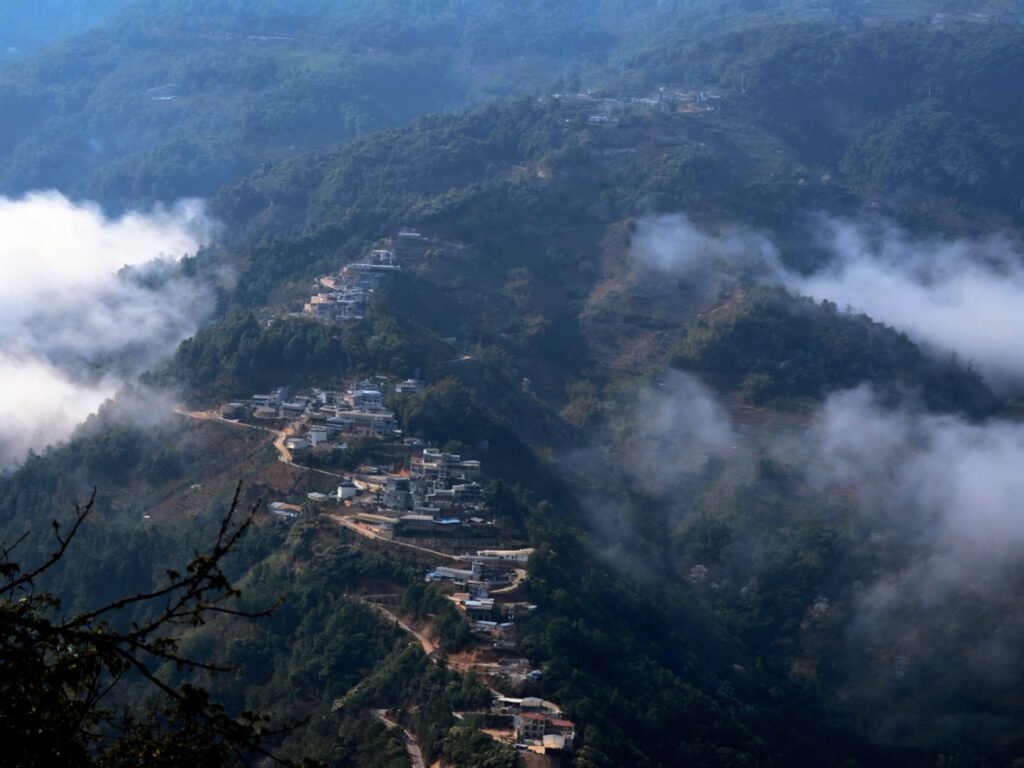
Appearance & Taste
- Dry Tea: Slender and tight strips, fine silver down evenly distributed, and a rich, fresh honey-fruited fragrance that lingers.
- Tea Soup Color: Pale golden amber, clear and translucent.
- Soup Taste: Initially smooth and moist with prominent floral notes; rich honey sweetness in the middle; crisp throat rhyme during swallowing; long-lasting sweet aftertaste with no astringency.
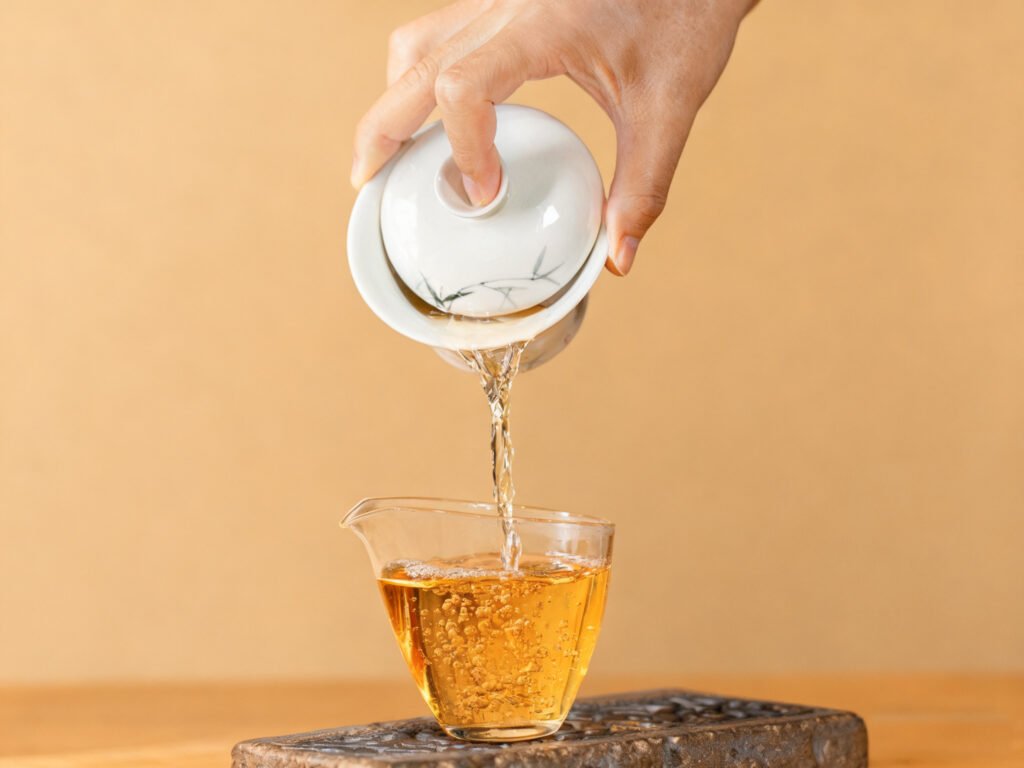
Brewing Guide
- Warm the Utensils:Rinse the Gaiwan (lidded bowl), fairness cup, and tasting cups with boiling water to preheat the tools and remove any residual odor;
- Measure Tea Leaves:Follow a 1:15 tea-to-water ratio (e.g., 5-7g Pu’er tea with 100ml water) and add the dry tea leaves into the preheated Gaiwan;
- Rinse the Tea:Pour boiling water over the leaves, then pour out the tea soup within 10 seconds (do not drink this batch) to awaken the tea’s vitality;
- Formal Brewing:Add boiling water again, cover the Gaiwan, and steep for 15-20 seconds (increase steeping time by 5-10 seconds for subsequent brews). Then strain the tea soup into the Gongdao Cup;
- Serve and Taste:Evenly pour the tea soup from the Gongdao Cup into tasting cups, and enjoy while hot to savor the tea’s layers and sweet aftertaste.
We follow the traditional way to make ancient tree Pu'er tea
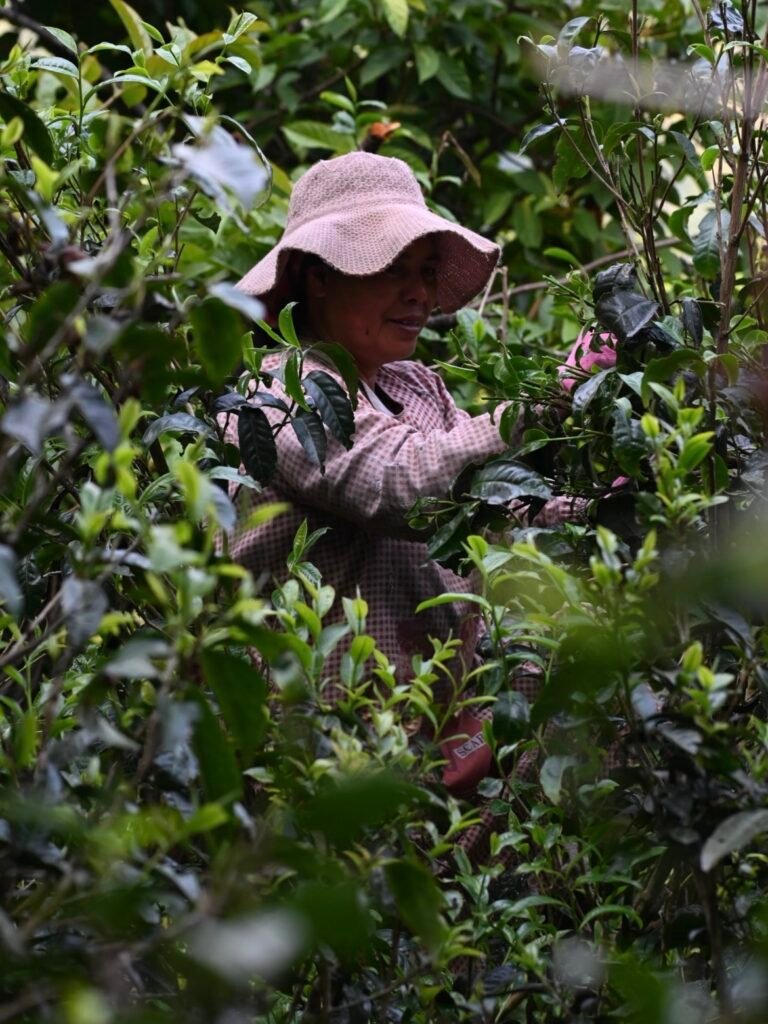
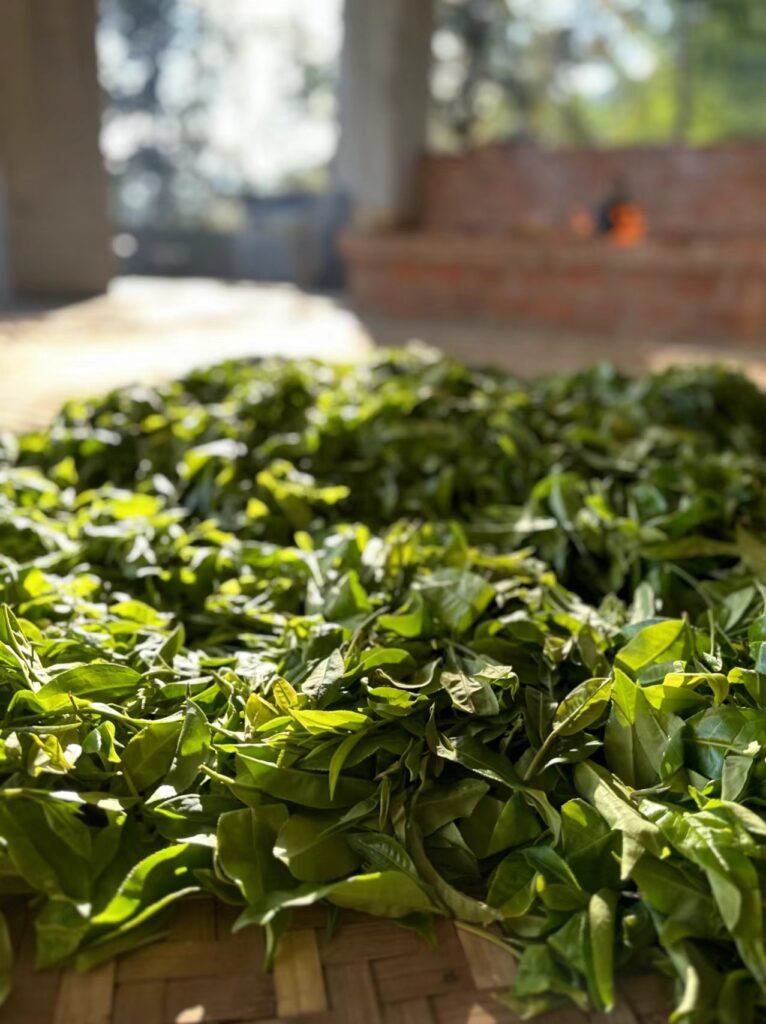

Harvesting
We adopt professional standards and harvest only in spring, allowing ancient tea trees to fully accumulate nutrients and avoiding over-harvesting, which tends to weaken the trees. And we harvest only “one bud with one or two leaves ” to meet the requirement for the delicate taste of ancient tree Pu’er tea.
Withering
Leaves are gently spread out to soften and losen.
Kill-Green
The leaves are then carefully pan-fired at high heat to stop any oxidation,this preserves the tea’s character.
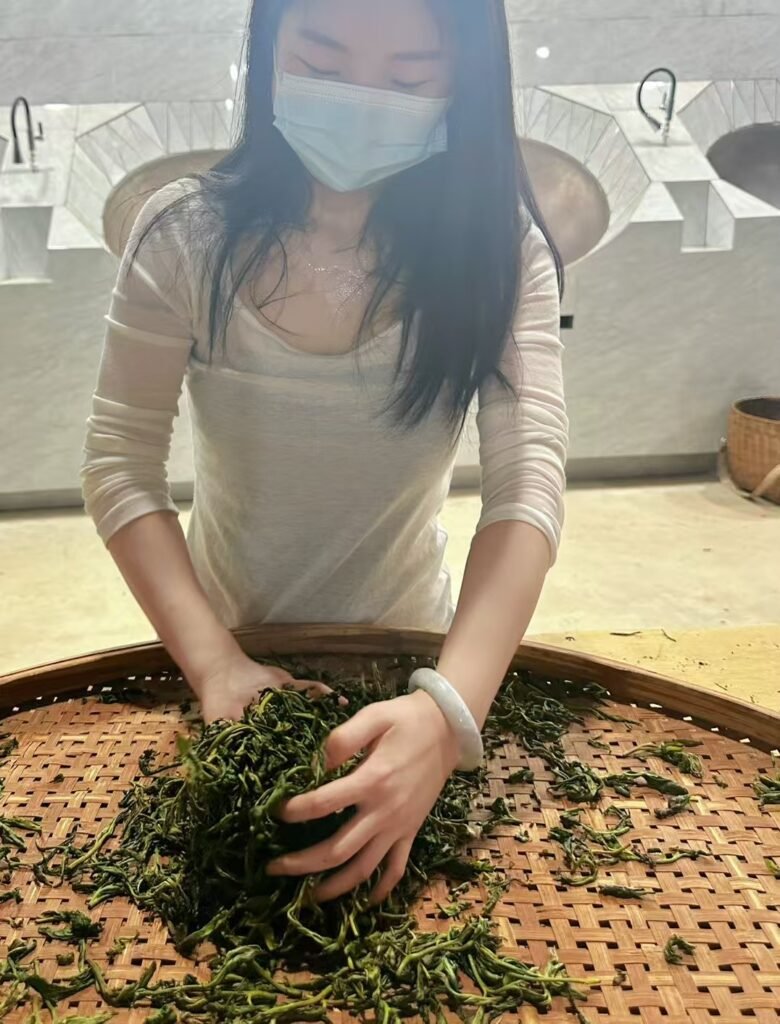
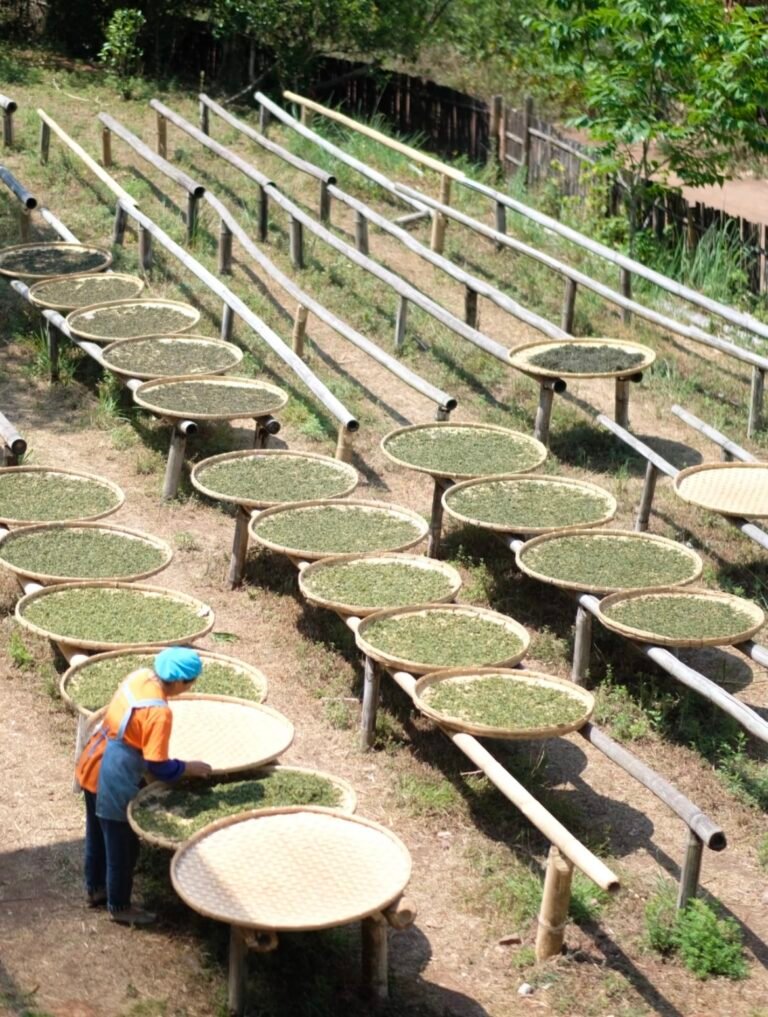

Rolling
The leaves are rolled by hand to break down cell walls and release their inner compounds.
Sun-Drying
Tea leaves are then dried under the sun – preserving its potential for aging and develops its signature sweet base note.
Pressing
We employ a traditional ancient stone mill pressing method for Pu’er tea: after steaming the sun-dried maocha (primary processed Pu’er tea), we then press it into cakes using stone mills. This method preserves the tea’s intact cellular structure and key intrinsic substances— the slow and uniform pressure of stone mills avoids damage to tea polyphenols, amino acids, and aromatic compounds that often occurs with mechanical pressing. The resulting cake density is well-suited for subsequent storage, facilitating natural microbial transformation while locking in the ancient arbor tea’s inherent freshness and mellow depth, ensuring the tea’s characteristics are steadily released during the aging process.
Tea aging
About 357-gram Tea Cake
This classic weight standard originates from the traditional Pu-erh tea specification established in 1735. The number “3” symbolizes the “Three Talents (Heaven, Earth, and Man)”; “5” represents the “Five Elements”; and “7” symbolizes the “Big Dipper” — perfectly interpreting the cultural connotation of the unity of heaven and man. This specification can promote balanced energy flow in the tea and achieve stable flavor transformation during storage.
Is Pu'er A Worthwhile Investment ?
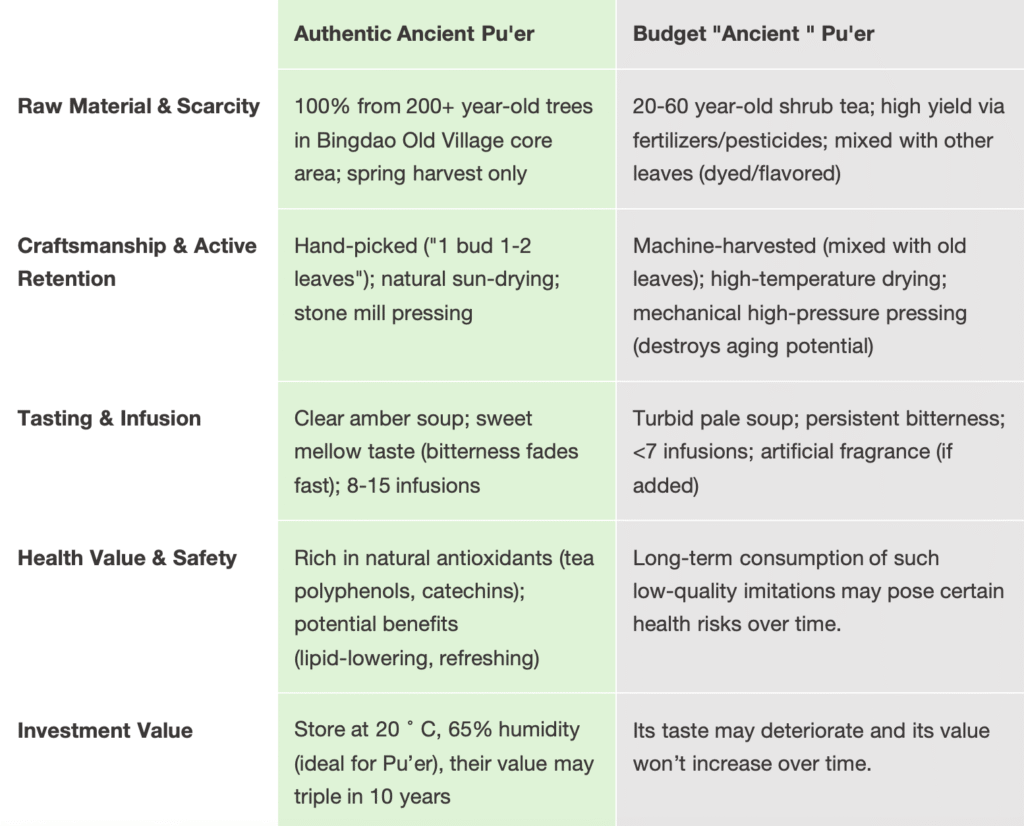


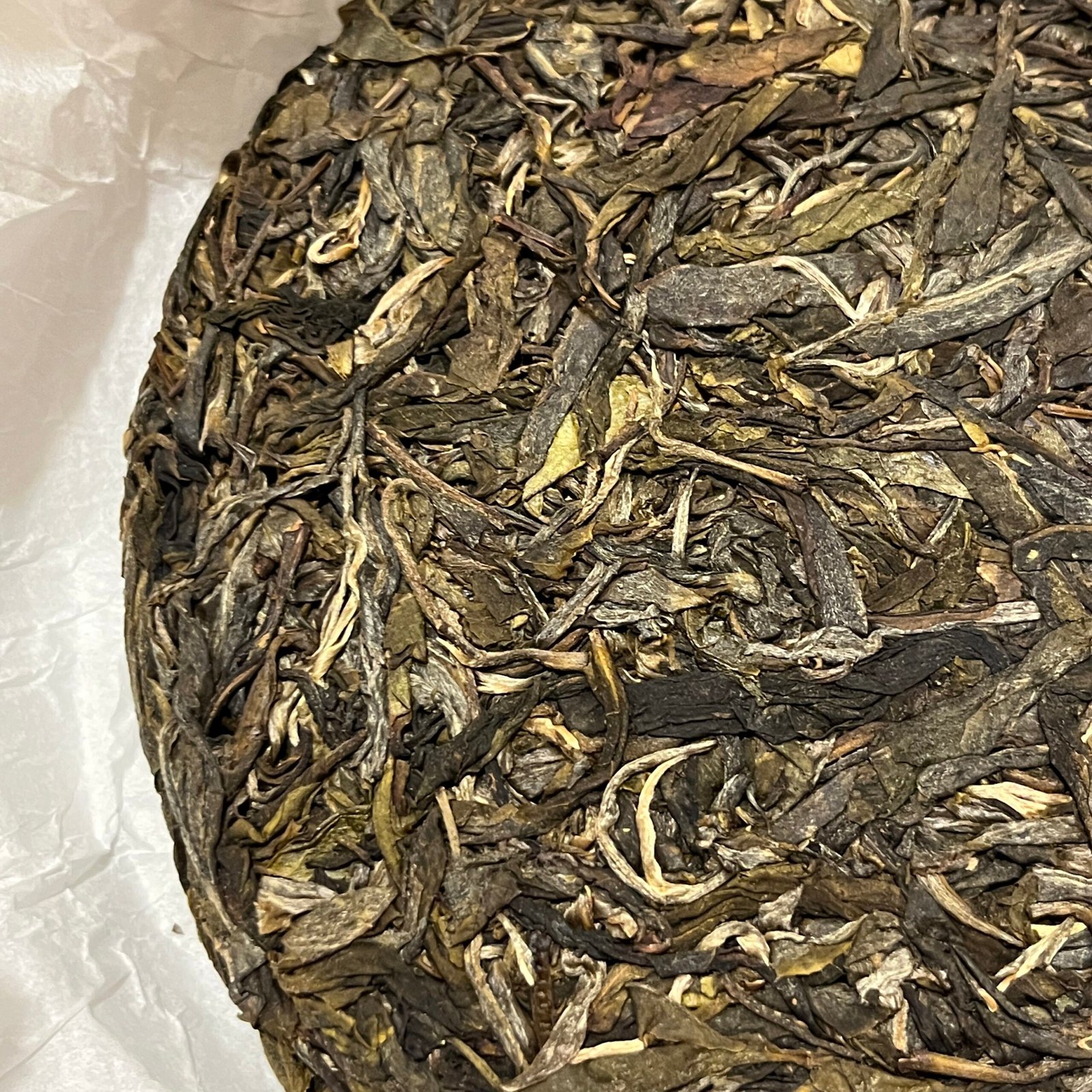
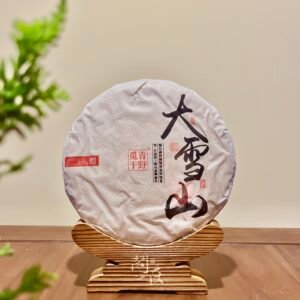

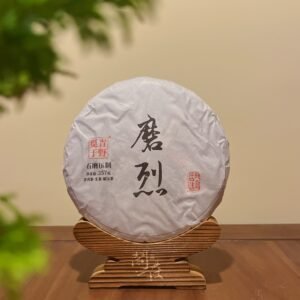

评价
目前还没有评价